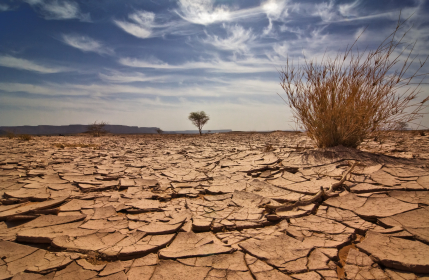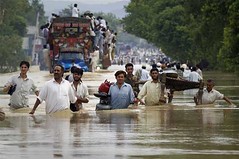- Blog
- Food & Agriculture
- Climate change and weather chaos
Climate change and weather chaos

Donate Now!
Your contribution will benefit Friends of the Earth.
Stay Informed
Thanks for your interest in Friends of the Earth. You can find information about us and get in touch the following ways:
In the past several years, extreme weather events have wreaked devastation around the globe – from violent tornadoes that descend out of nowhere to reduce entire towns to rubble, to floodwaters that break their containment dams and levees to surge into the streets, to wildfires that consume hundreds of acres and threaten homes. In just the past year, records have been broken, billions of dollars have been lost, millions of people have been displaced and hundreds more have lost their lives. But although the circumstances of each event are unique, they are all linked by a common thread — the serious impacts of global climate change.
Although it is impossible to isolate global warming as the direct cause behind a given incident, the clear trend towards more numerous and more severe extreme weather events is undeniably linked to the effects of global climate change. According to groundbreaking reports from the Intergovernmental Panel on Climate Change Report, the scientific consensus is that global warming will have increasingly dramatic effects on extreme weather events. Rising ocean temperatures encourage the incidence of severe storms by creating an abundance of warm, moist air, which can collide with cool air to cause a convection effect that can lead to dangerous thunderstorms and tornadoes. Moreover, global warming both raises temperatures and enhances soil drying, thereby increasing the duration and severity of droughts. As a result, the EPA predicts the following as “very likely or virtually certain changes in extreme events and associated effects”:
• More severe storms and more frequent heavy precipitation, and
• More frequent heat waves and a greater area affected by drought.
Already, evidence in the few years since the 2007 IPCC report was published illustrates the alarming accuracy of these predictions. The United States has already experienced eight disasters that each cost more than a billion dollars in damage in the first half of 2011, coming close to 2008’s record of nine such events over the course of the whole year.
Storms, tornadoes, precipitation, flooding
In the Gulf of Mexico, sea surface temperatures 1 to 2.5 degrees Celsius above average have created an abundance of the warm, moist air that fuels severe thunderstorms, tornadoes, and hurricanes. Not surprisingly, 2011 has been the deadliest tornado season in the United States in 75 years, with many fatal storms across the East and Midwest and a death toll totaling 523. An estimated 750 tornadoes in the first half of 2011 caused more than $18 billion in total economic losses.
 Flooding in Pakistan, 2010. (c) Giro555 Flooding in Pakistan, 2010. (c) Giro555 |
High winter precipitation in the early months of 2011 led to the accumulation of vast mountain snowpacks, resulting in an unusually large volume of snowmelt in the spring. This, accompanied by heavy spring rainfall, has caused torrential flooding along the Mississippi and Missouri Rivers, displacing hundreds of thousands of residents and inundating acres of cropland. The Mississippi swelled to 6 times its average width and nearly 48 feet deep, forcing the Army Corps of Engineers to open the Morganza Spillway, causing water to flood rural towns in order to alleviate flooding in more populous regions like New Orleans. Many levees along major rivers are simply not designed to manage this level of severe flooding. “Every year is a 10-year flood now or worse,” said Professor Robert Criss of the Washington University in St. Louis.
In 2010, China’s worst flooding in a decade killed more than 700, destroyed 675,000 homes, and affected three-quarters of its provinces. A tragic reprise of that disaster may be on the way as what was until recently a drought-stricken region in central and southern China has now been overwhelmed by a deluge of torrential rain. More than 100 people have died so far in landslides and flooding. Heavy flooding within the past year has also displaced millions in Australia, Colombia, and Pakistan.
Droughts, wildfires, heat waves
After Russia suffered a severe drought less than a year earlier, 2011 is becoming Western Europe’s worst drought in a century, leading to serious concerns about grain shortages. Likewise, Texas is suffering its worst drought on record with no significant rainfall since August 2010, as crops wilt and even oil and natural gas drilling takes a hit. Economic losses to the state are expected to exceed 4 billion.
Extremely dry conditions are resulting in poor crops but abundant wildfires in what ha
 California Station Fire, 2009. California Station Fire, 2009.(c) mbtrama |
s already been a record-breaking Texas wildfire season, as nearly 12,000 fires burned 4,538 square miles between November 2010 and June 2011. Similar conditions persist across the Southwest. The Wallow Fire in Arizona and New Mexico was declared the largest in state history after it grew to exceed 733 square miles. Thousands have been evacuated and 32 homes have been destroyed.
In past years, heat waves have caused more deaths than any other extreme weather event. NASA data shows that the past decade was the warmest on record, with 2010 and 2005 tied as the hottest years ever recorded. Because urban structures retain more heat, city residents are especially vulnerable, which is particularly concerning given that urbanization is rapidly increasing around the world.
Extreme heat and the droughts and wildfires that follow are becoming annual headlines, in large part due to the effects of global warming. Rising temperatures cause snow to melt earlier, extending the wildfire season by more than two months in the past three decades. Prolonged droughts have also become more common, and climate models in the IPCC report “concluded that the Southwest United States may have a permanent Dust Bowl climate (p. 50)”. And the same warmer ocean temperatures that cause stronger hurricanes and tornadoes also spawn thunderstorms, raising the probability of fires started by lightning strikes.
Not a natural variation
As IPCC scientists have concluded, and as a vast amount of scientific literature unequivocally demonstrates, global warming is clearly occurring as the result of human behaviors and decisions. “We cannot explain the warming trend […] without considering human impacts on climate. This is not a natural variation,” said Professor Michael Mann of Pennsylvania State University. But although global warming and its devastating consequences are undoubtedly human-made, so too will be the solutions.
Related readings
Climate ostriches: why Russia’s and Pakistan’s extreme weather is about to become the norm.
